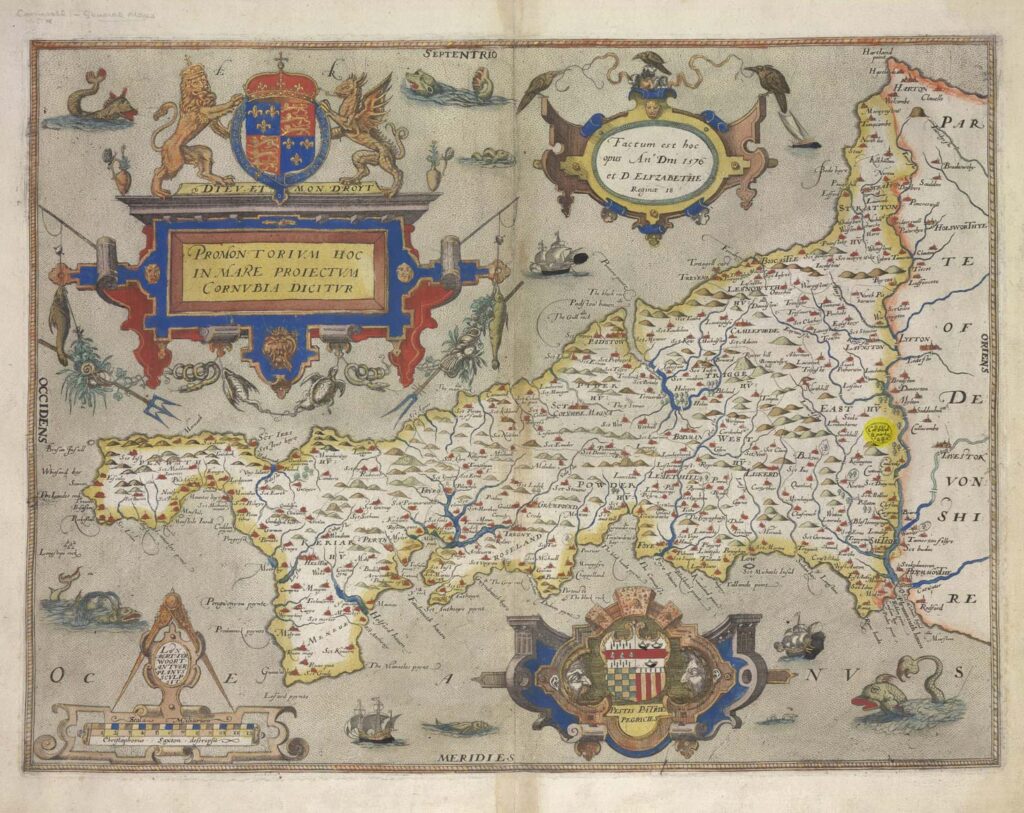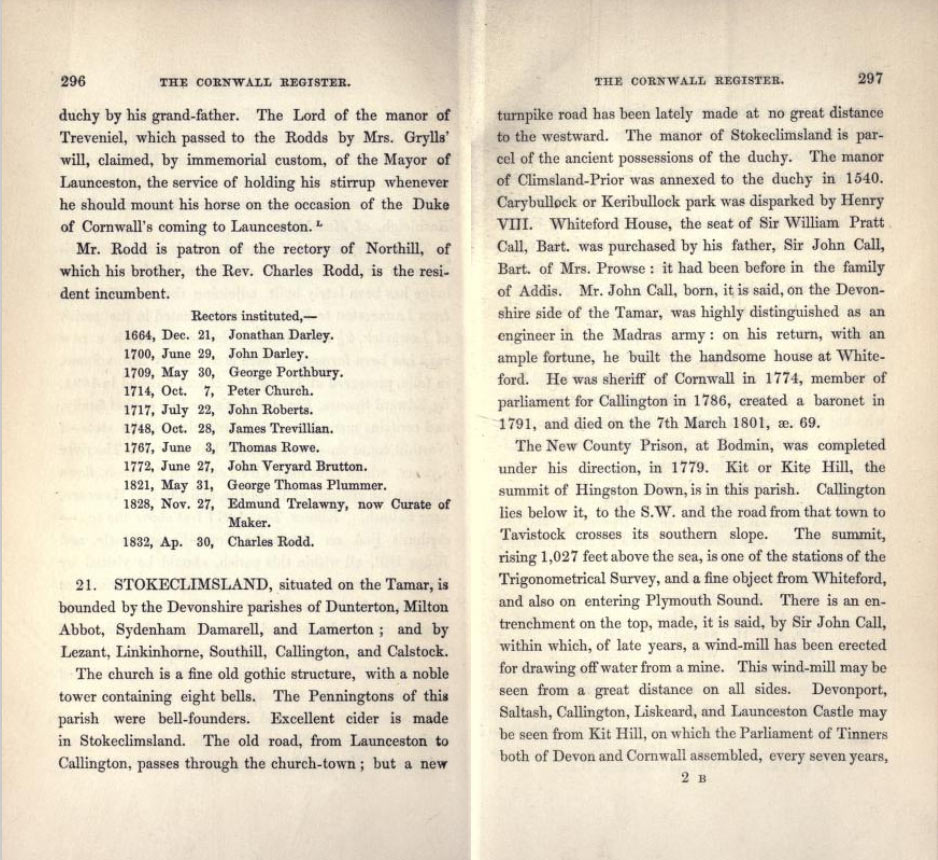Stoke (outlying farm) Climsland (name of the manor) is rich in history, recognised as far back as the Doomsday Book (1086) and of Saxon origin, with roots in the stone and bronze age.

The manor of Climsland (or Climson/Climstone as it was known then) was one of the seventeen Antiqua maneria of the Duchy of Cornwall. The Doomsday book records that Climson consisted of: 5 hides of land and land for 24 ploughs. One hide was held by the lord (with 3 ploughs and 9 serfs) and 30 households, 24 smallholders had 17 ploughs and 4 hides of land. Also 9 slaves were recorded. Additionally there was 3 acres of meadow, 16 square leagues of pasture and 3 square leagues of woodland. The income from the manor was £6 sterling.
In the 12th century, Climsland became part of a 250 hectares (620 acres) Royal Deer Park called Kerrybullock, until it was disparked by Henry VIII in the 16th century. Now, Deer Park Farm sits on part of the site. The park is highlighted in yellow on this 1576 map by William Buxton (courtesy of the British Library):
The parish has for many centuries been predominantly Duchy land and the Duchy Home Farm is situated near Stoke village. This has now become the Duchy College. To the south of the parish is Kit Hill, a significant landscape feature and for many years the source of stone and minerals.
At one time there were seven mines employing over a thousand men, but these went into decline at the end of the 19th century, although the Luckett mines were reopened for a period of just over five years in 1947. Notable landowners include The Duke of Bedford and the Duchy of Cornwall.
You can read what it said about Stoke Climsland in the 1847 Cornish Register below:



